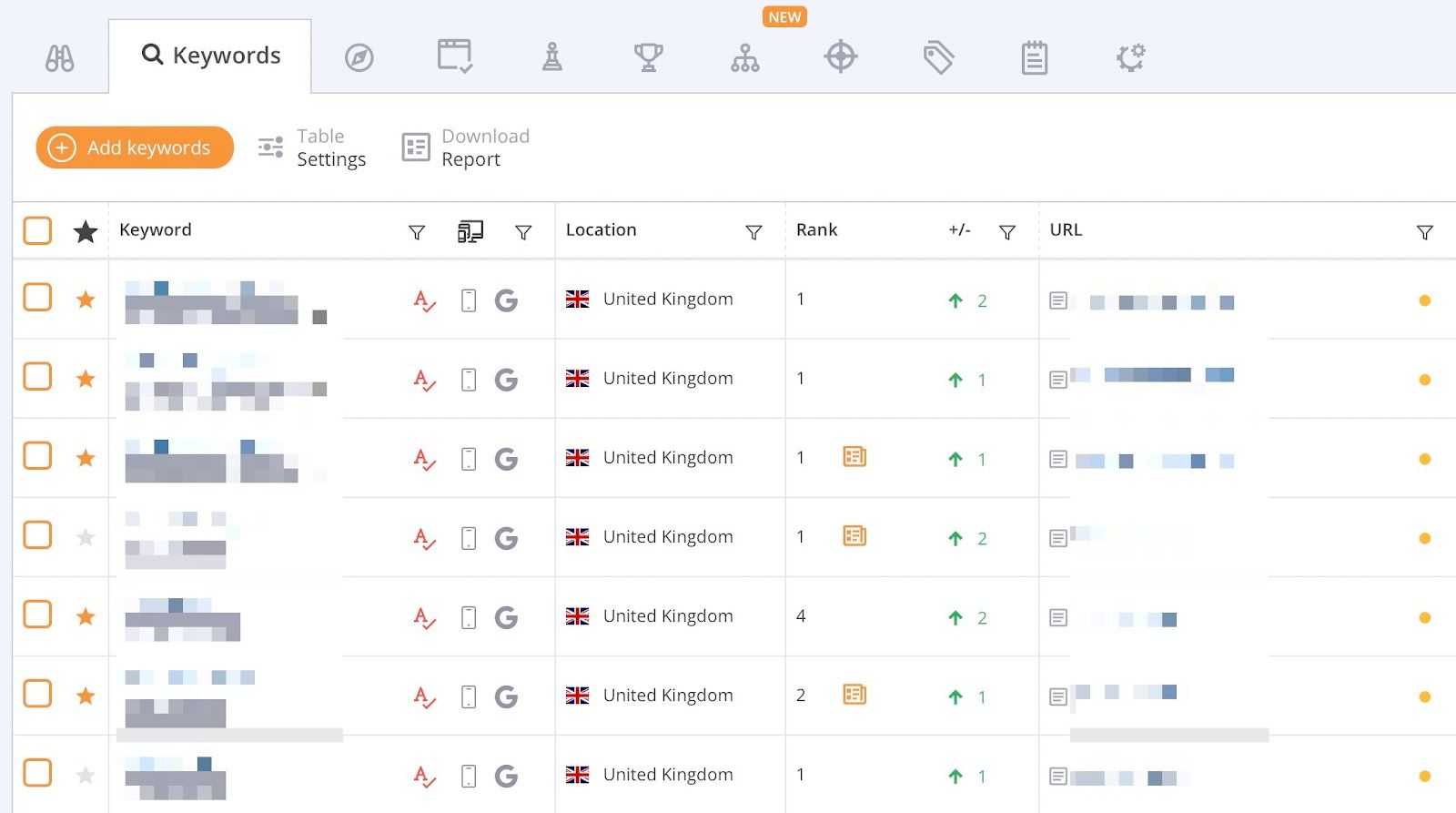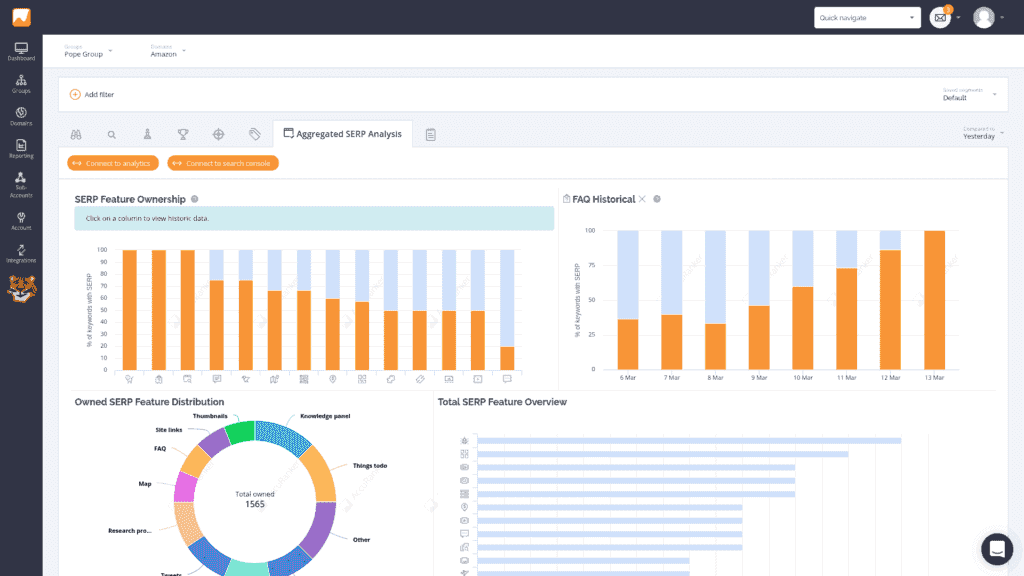How To Align UX and SEO To Achieve Desired Results?
Last updated on Saturday, November 18, 2023

Whenever I see a piece of art that catches my eye, I can't help but stop and take a moment to appreciate its beauty. The initial impression of a painting is what draws me in. The same can be said for a business's website design. A well-designed website should captivate visitors and leave them in awe.

Similarly, while designing your business's website, think of it as a canvas for creating a form of art — one that resonates with your target audience and creates a smooth browsing experience which ultimately fosters people’s trust in your services.
To achieve this, in technical terms, it means to emphasize design aesthetics to a point where every feature is optimized for user experience (UX) and bring light to this art of work by executing effective search engine optimization (SEO).
In this article, we will extensively explore the changing perspectives regarding effectively maneuvering through the interconnected realms of UX and SEO. It aims to illustrate the significance of combining these domains for the online success of businesses.
Understanding the Interplay Between UX and SEO
Professional team of developers or a website design company knows the importance of enhancing UX to positively impact SEO. Eventually, improving user engagement and web accessibility. This ultimately results in your website to become more valuable to both users and search engine web crawlers.
When considering UX as a Google ranking factor, it encompasses elements such as:
#1. Responsive Design & Optimization
“Mobile search makes up 58.99% of global web traffic, excluding tablets.”

Find more statistics at Statista
Mobile searches dominate the scene – it is an accessible device to be online from any part of the world. People can easily search for any information, which is why it has become essential in making sure your website looks and works well on all devices. Responsiveness is the key to success!
Mobile phone users prefer local searches over laptop or desktop when looking for quick, easy information such as weather updates or checking in on the score for sports. Thus, optimizing your site for phones and tablets corresponds to consumer preferences.
It helps your SEO efforts by increasing mobile conversions, increasing user engagement, and increasing brand visibility, all of which will lead to improved search engine ranks.
#2. Enhance Content’s Quality
The first step in developing outstanding content is determining what type of content "YOUR" target audiences connect with. That bit of information is what piques your customer’s interest.
“Research shows that 77% of Internet users read web content regularly before making a purchase-related decision.”
When creating content for your website, you must include a bridge that balances all material so that it has the ability to deliver the proper insights about your company and services. At the same time, you must ensure that Google considers the information to be distinctive, enhancing the experience of the users.
To achieve this goal, you must prioritize the readability of the published content:
[1] Be informative
Contents are supposed to be informative insights that will help the person reading it understand the full context of it. Try to answer the questions your audiences are looking for.
[2] Make no errors
Successful brands look for that inch of mistake that may question their trustability. This is why content should be well-structured and written free from any grammatical errors. Be interesting, keep the readers captivated – it’s all about creating connections!
[3] Be original
Content needs to be original (plagiarized content will get you red flagged). A fresh perspective is what gets you noticed!
[4] Optimize keywords
Keyword optimization doesn’t mean keyword stuffing! Following a natural flow of writing is important when placing keywords to your content, otherwise you may sabotage the SEO for your site, as well as the user experience for your audience.

Additionally, you have the option to make use of AccuRanker's Google Grump for keyword analysis – utilizing a distinctive algorithm to analyze the average rank fluctuations within the top 100 search results for each keyword.
#5. Routine updates
Keep your content up to date with current events by updating it on a regular basis. Also, if you publish statistics or data-centric material, it is likely to change every year, so keep that openness in your content so that it is updated when people read it from your site.
#6. Make sure to link your sources
Internal and external links are essential components of a solid SEO strategy, as well as improving the user’s experience. The efforts of link building helps boost credibility and increase traffic to your site, thus, improving its ranking on Google SERPs.

Moreover, using Accuranker SERP Analysis Tool, you can readily assess the search engine results page (SERP) outcomes and implement ongoing enhancements based on the analysis to improve your rankings on search engines.
#7. Integrate visual content
Visual content lets your audience know more just by looking rather than reading all the time. It’s the minimal balance that doesn’t make your audiences feel bored when visiting your site. Incorporating relevant images, videos, or interactive elements definitely enhances the user experience and makes the content more engaging.
#3. Website’s Architecture Goes a Long Way
A solid site architecture favors the foundation of technical SEO, as the SEO-friendly site structure lets the users navigate your content while also assisting Google in successfully indexing it. Thus, allowing you to rank better in the search results!
The layout and structure of your website are likely to affect your visitors, with the majority relying on the navigation menu to access crucial pages such as 'About Us,' 'Our Services,' or 'Contact Us', could be different depending on what type of services your business offers.
Furthermore, search engines can comprehend how your site is organized by using navigation menus, breadcrumbs, URLs, and sitemaps.
Your visitors must be able to find what they need, you could do that by including user-friendly navigation elements that are trending such as the mega menus, filters, and faceted search tools.
How to measure and monitor UX for SEO for driving success?
First thing’s first…
(1) Analyzing the bounce rate and page speed time is a must
Focus on two essential variables when evaluating UX for better SEO –
Bounce rate: The percentage of visitors that leave after viewing only one page, indicating potential UX concerns.
Time on page: This metric reveals user engagement; longer times suggest more valuable material.
Well, for a fact when a page with a load time of 1 to 3 seconds has a 32% greater bounce rate. The first page of Google results takes an average of 1.65 seconds to load. If a website takes more than 4 seconds to load, one out of every four visitors will leave.
When it comes to analyzing user experience for better SEO results, two important metrics to consider are bounce rate and time on page.
Bounce rate is the proportion of website visitors who exit the site without exploring more than one page. A high bounce rate indicates that visitors are not finding what they need or the website is not meeting their expectations.
By analyzing the bounce rate, you can pinpoint possible issues with your website's user experience that might be influencing its SEO performance.
Time on page measures the average duration users spend on a particular webpage. It offers a glimpse into the level of engagement that visitors have with your content. When users invest a substantial amount of time on a page, it implies that the content holds value and is captivating.
On the other hand, a short average time on a page may indicate a lack of interest or difficulty in finding relevant information. Analyzing both bounce rate and time spent on a page provides you with valuable insights regarding the performance of your website's user experience.
These measures assist in highlighting the areas where improvements can be made to boost user engagement, longer visits, and ultimately enhance SEO performance of the website.
(2) Usability testing and user feedback can’t be overlooked
Usability testing and user feedback play pivotal roles in enhancing the user experience to achieve improved SEO outcomes. These approaches provide valuable insights into user interactions with a website, helping businesses pinpoint areas that need enhancement.
How to Usability Testing?
Evaluate the smoothness of navigating the actions and user-friendliness of a website through real user testing.
Engaging users in tasks and closely monitoring their actions to spot any usability challenges.
Collecting input on user contentment, site navigation, and the overall encounter.
Examining the findings and implementing data-driven enhancements to elevate the user experience.
There are plenty tools to do usability testing with, some of them are: Lookback ,UserTesting, Loop11, and more.
Some ways to collect the user’s feedback:
Collecting feedback using Google Forms or other data collecting tools.
Analyzing the user’s feedback on the website’s design, features, as well as the content.
Taking all the feedback, positive and negative, into account to better the user experience for enhanced ranking of the website.
Moreover, it’s recommended to use a SERP analyzing tool, such as Accuranker’s LIVE SERP TOOL. It allows you to observe the ranking and SERPs for both desktop and mobile platforms.

(3) Don’t miss out on tracking the organic search rankings and website’s traffic
Tracking organic search rankings means you are moving to the right direction of your efforts as it tells how well your website appears in Google and other search engines – when people search with specific keywords.
It's similar to seeing where your website ranks on the popularity scale, that allows you to determine whether the actions you're taking to make your website more visible are effective or if you need to make changes.
You can also count how many visitors come to your website from search engines by measuring organic search traffic – this tells you if your search engine marketing methods are working and how much they are assisting your website in getting rankings and getting noticed by your audience.
Conclusion
If you want to ensure a successful online identity for your brand through its website, then emphasizing on the UX and SEO is equally important. These are two individual components that could single handedly ensure you have the most reliable and user-centric website that your target audience can trust.
This means that providing a great user experience leads to more time spent on the website, lower bounce rates, and, ultimately, higher search engine rankings. Furthermore, the components ensure that your website is more optimized, allowing pages to load faster, assuring mobile responsiveness, and improving website navigation to improve user experience.
Now that you’re aware of how to simply make your brand's online presence incredibly stable with a few easy practices, it's time to start keeping up with the industry trends.

Article by:
Sawon Saha
SEO Specialist
Sawon Saha is a digital nomad and SEO Specialist. He enjoys assisting businesses in improving their online visibility. Sawon is always up for a new challenge, and he enjoys using his skills to help others achieve their goals.


